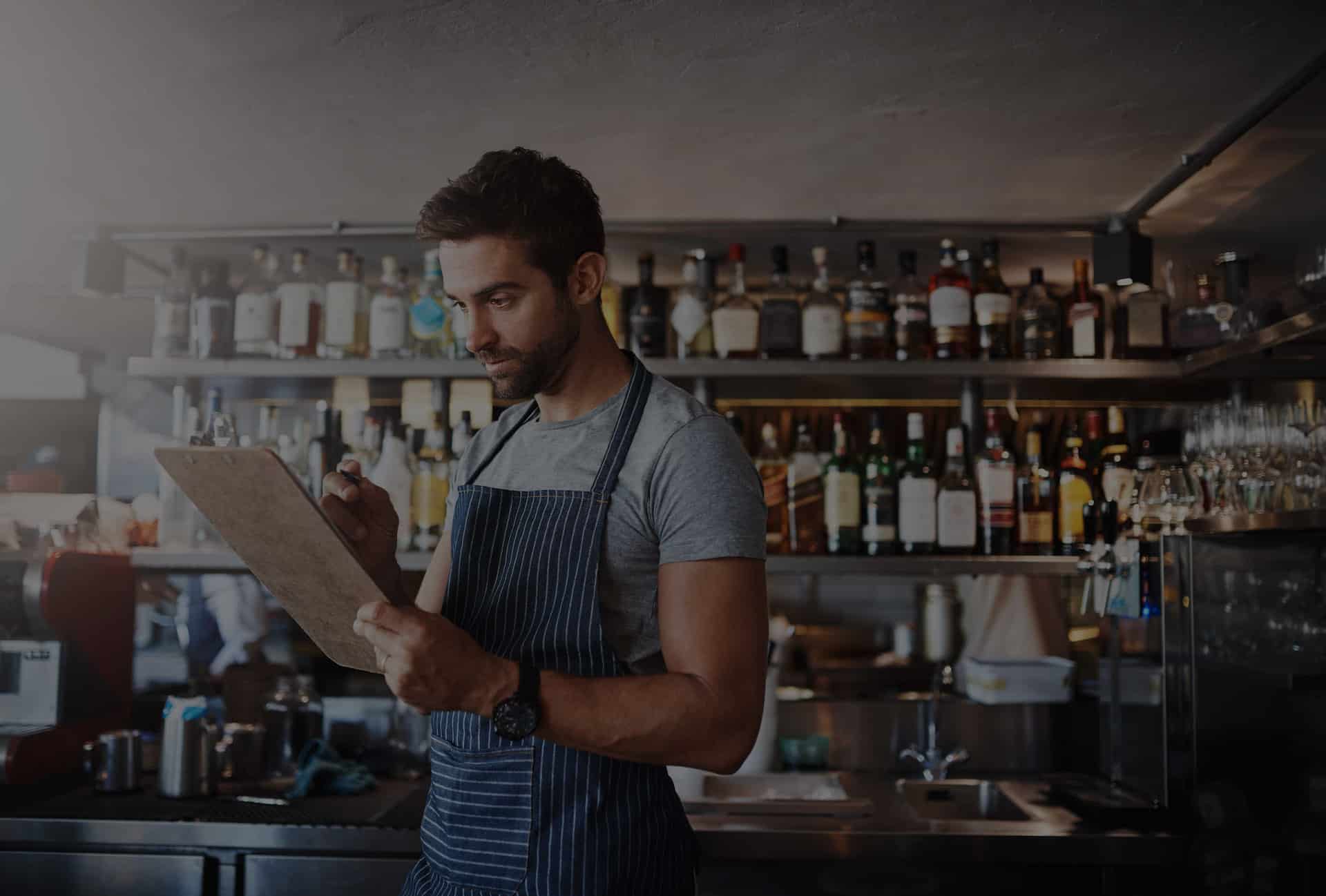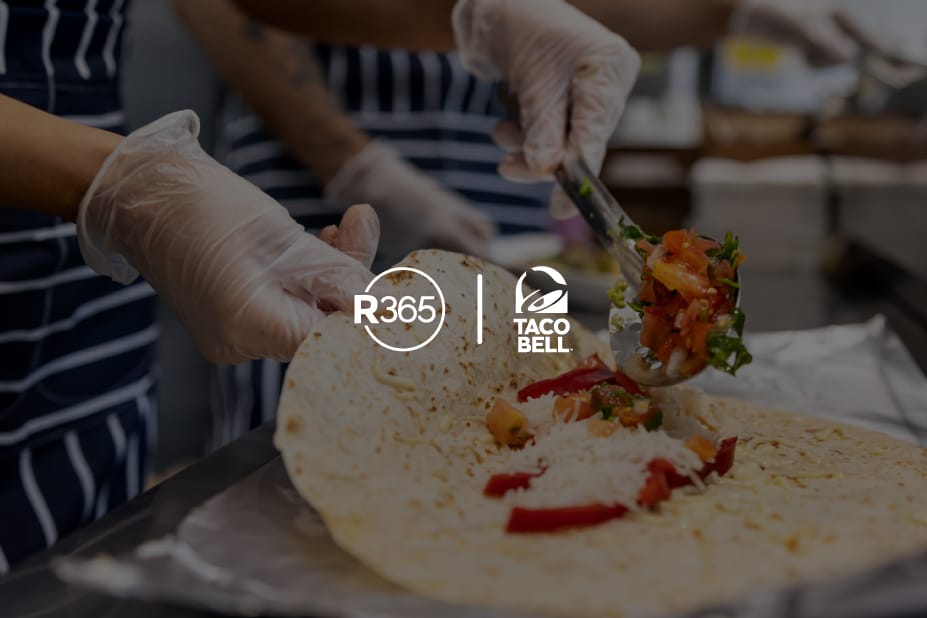Becoming successful in the restaurant industry is difficult but staying ahead of restaurant operational challenges is even harder. To prepare for the new year, restaurant owners, operators, and managers need to start planning now.
Here are the top 10 operational challenges restaurant operators should expect in 2020:
1. Finding and training staff
Employees determine the customer service experience in a restaurant. But with restaurant industry turnover rate at a post-recession high of 75%, restaurateurs are crunched to maintain adequate staff. Some operators report the labor shortage leading them to hold onto undependable staff rather than firing them, or constantly overschedule interviews to fill the minimum number of roles.
To address finding and training staff within a scarce workforce, many restaurant owners are beginning to focus on retention.New training methods focus on thorough cross-training, an emphasis on company mission and values, and solid management team structures. Restaurants are also experimenting with offering health benefits or commuter subsidization to help supplement hourly wages and retain employees.
2. Adjusting to rising minimum wages around the country
With nearly half of the United States imposing higher minimum wages starting in 2020, restaurants also need to focus on optimizing labor costs (especially as a percentage of sales). Labor is one of the largest restaurant operational costs, but it is also one of the most controllable.
To optimize labor hiring and training costs, restaurant operators can turn to restaurant operations tools to reduce costs over time. By integrating POS system with an accounting and scheduling platform, labor and sales data can be used for smart forecasting. Tools like cloud-based restaurant scheduling software and centralized mobile apps for employees can help make labor scheduling more efficient. And by connecting all of a restaurant’s up-to-date information, restaurant operators can track a daily payroll accrual and compare scheduled labor to actual numbers to proactively address any labor issues.
3. Managing complex, rotating inventory
Restaurant inventory management involves a large number of moving pieces, many of which are “temporary” compared to other retail businesses. Ingredient costs are one of a restaurant’s largest expenses and managing inventory accurately can be difficult.
Restaurant owners trying to keep up with the constant inventory change are turning to inventory management software, which covers the inventory process from end to end, from counting and transferring to ordering and invoicing. Certain parts of inventory cannot be automated, like counting by hand, but they can be streamlined through template inventory sheets on a phone or tablet device. Other time-consuming elements of inventory can be automated, like tracking ingredient costs, and creating journal entries.
While managing an accurate inventory is essential for a healthy bottom line, it also has the benefit of smoothing out other operational challenges restaurants face. Tools based on accurate inventory, like smart ordering, suggested purchasing amounts, or smart receiving (tracking when vendor ingredient costs are above normal), help maintain the profit margin of individual menu items.
4. Responding to shifting guest preferences and expectations
The dining experience is always evolving, and today’s guests have developed different customer service expectations about diet, nutrition, allergies and sensitivities. In addition to migrating toward a more health-conscious style of eating, customers increasingly have questions about sustainability in the sourcing of ingredients.
With customers demanding more accountability and transparency, flexibility in making menu updates has become a necessity. To maintain profitability, management teams should keep one eye on customer taste trends, and one eye on food and labor costs.
5. Maintaining accurate, profitable menu pricing and planning
Because a menu is one of the most visible pieces of restaurant marketing, maintaining a relevant, profitable menu is essential for a restaurant’s bottom line.
The biggest operational challenge with creating a menu is to balance profitability and popularity. Restaurant owners leveraging restaurant operations software can use menu engineering tools to visualize trends in their menu items, seize new opportunities, and make changes where necessary. Combined with sales data by location or period, menu engineering data can be informed by specialized sales forecasts.
By making consistent menu adjustments, rather than surprising customers with noticeable increases done infrequently, restaurant operators can stay in front of menu profitability. Menu engineering ensures restauranteurs that they’re making data-driven adjustments that add to the customers’ positive dining experience and their restaurant’s success.
6. Adjusting to increasing food costs
Food costs fluctuate, especially as customers place a greater emphasis on finding higher-quality ingredients. Restaurant operators must continuously track their recipe costing, mapping out ingredient cost, usage, and yield to understand the contribution margin of individual menu items.
Automating tools like recipe costing, or using software like smart prep to reduce waste, can help streamline the business and adapt to food cost fluctuations. Tracking food waste trend reports, production stats, and recipe cost by location or time period can help identify inconsistencies.
With high labor turnover and the need to constantly train staff, restaurant operators will also want to keep an eye on actual versus theoretical food cost variance over time. Restauranteurs can measure out an exact recipe cost to the penny, but if staff isn’t properly trained, the actual ingredient costs may look much different.
7. Keeping up with the rise of mobile
The use of mobile devices only continues to grow in restaurant operations. According to the National Restaurant Association, nearly nine in 10 smartphone users look up locations, directions, or hours of a restaurant before choosing where they will eat — and a third of these customers do so at least once a week.
With customers increasingly turning to their phone for information about their restaurant dining experiences, providing a smooth experience for mobile customers should be a priority. Restaurant websites and online restaurant menus should be mobile responsive. Consequently, it’s wise to invest in SEO-friendly updates and quick load time maintenance for website pages, especially on mobile.
Today’s customers also expect to do everything on mobile that they can do on a regular computer, including ordering pickup or delivery, seeing wait times, making reservations, and easily viewing different menus.
These investments can be expensive, but they can pay off for a restaurant’s success. Customers who have ordered online have been shown to visit a restaurant 67% more frequently than customers who haven’t. In addition, more than half of smartphone users report using their phones to take advantage of special deals, rewards, or loyalty programs from restaurants.
8. Balancing costs of providing delivery with a profitable bottom line
Sixty-three percent of consumers use a smartphone to order takeout or delivery, and this percentage continues to grow. Whether because of growing customer service expectations, or because they are trying to keep up with the competition, more and more restaurants are adding their own delivery or working with third-party services.
However, many restaurants are either losing money, breaking even on their delivery — or, worse, aren’t even able to track their financial impact. Restaurant owners currently delivering or considering adding delivery must make sure to use restaurant operations software that can automatically calculate and track the profitability of delivery based on sales, CoGS, and delivery expenses. By automating tracking, the management team can be sure they are making data-driven decisions when designing their delivery system.
9. Maintaining online reviews and social media marketing
According to a Harvard Business School study, a one-star increase in Yelp rating leads to a 5-9% increase in revenue for a business. In the “reputation economy,” where a brand can be boosted or hurt based on what is being said about them in online reviews, customer service matters. Bad online reviews can be made out of customer service experiences that can outweigh the food, location, or ambiance of a restaurant.
The more locations a brand or franchise has, the harder it is to create a consistent dining experience. To protect a brand’s reputation as a whole, restaurant operators can use online reviews to identify issues and be proactive in responses to future problems. Online reviews can actually be used as a constructive feedback tool, giving helpful insight as well as a platform to control the situation and change the narrative.
For millennials in particular, social media word-of-mouth marketing is especially powerful. The millennial audience is frequently deciding where to eat based on the suggestions of friends and influencers, so it’s wise to consider how customers are interacting with a restaurant both on and off-line.
By being proactive in social media channels, restaurant owners can affect the perception of their restaurant brands and start to control the perception of the food and dining experience. Restauranteurs already using social media with their brands should consider expanding into other areas like social media advertising, text and email marketing, or loyalty programs.
10. Accurately tracking business intelligence
With all the day-to-day operational challenges of restaurant management, taking a long-term view can be challenging to prioritize. However, business analysis ensures that restaurant operators are making smart, informed decisions in the moment, before small issues become big problems.
To avoid tedious and inaccurate data tracking, it’s best to automate as much restaurant operational reporting as possible. Automating time-consuming tasks like sales and labor goals, scheduling, recipe costing and inventory management allows the management team to focus on making profitable adjustments to the business and reduce costs over time, rather than inputting numbers into a computer.
Conclusion
Restaurant owners, operators, and managers will have plenty of tough operational challenges in restaurants to face during 2020, but proactively addressing these challenges will allow restauranteurs to face them with confidence.
If you would like to easily track your inventory and labor costs to gain insight into your operations, consider a comprehensive, restaurant management solution that incorporates both restaurant accounting software and operations software. With Restaurant365 you can save on food and labor costs by making adjustments in the moment, based on completely up-to-date information. Restaurant365 is a cloud-based restaurant management solution that’s integrated with your Point-of-Sale system, as well as to your food and beverage vendors, payroll provider and bank.



